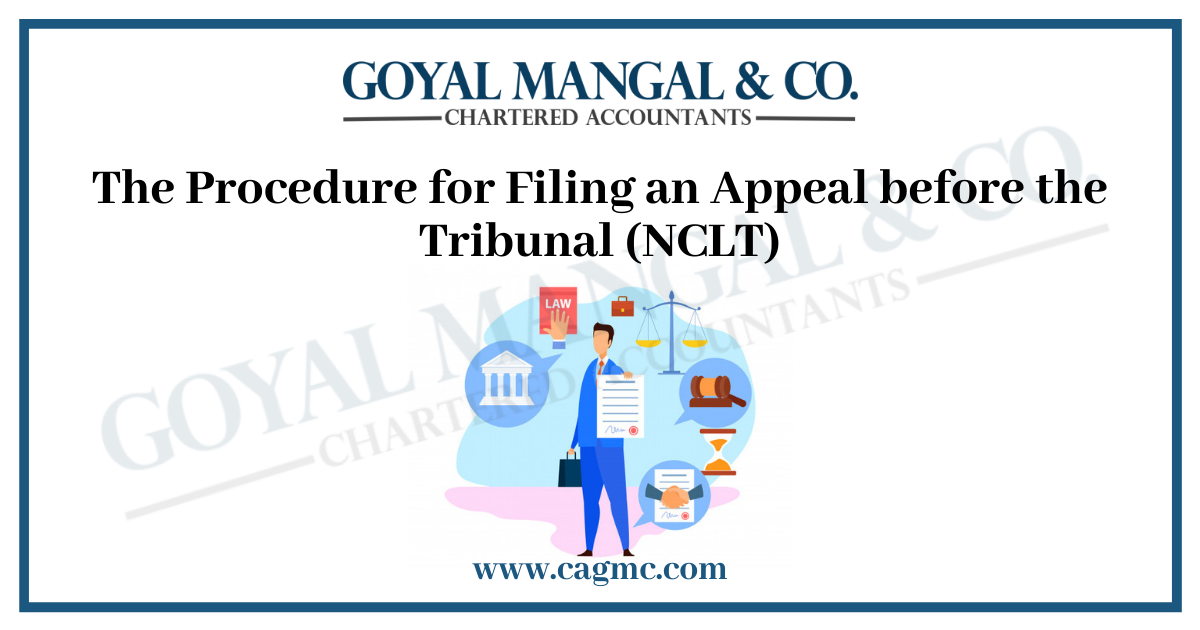
With industrialization at its peak in India and so were its issues, the government of India introduced various laws to regulate them. Under the Companies Act, 2013, the government, on 1st June 2016, on the recommendation of Justice Eradi Committee, established the National Company Law Tribunal (NCLT).
It’s a quasi-judicial adjudicating body set up under Section 408 of the Companies Act, 2103.
Read on to know more about the NCLT and the process of filing an appeal before NCLT.
Let’s start with- what is NCLT?
| Table of Content: |
National Company Law Tribunal- An Overview
As mentioned above, NCLT is quasi-judicial authority established to deal with corporate disputes that are of civil nature arising under the Companies Act, 2013.
NCLT serves as the adjudicating authority for matters concerning the insolvency resolution of companies and LLPs (Limited Liability Partnerships) under the Insolvency and Bankruptcy Code, 2016.
The Tribunal was established to govern the companies registered in India and make a formal and unbiased judgment on a disputed matter related to them.
We can call it a successor to the Company Law Board. The Tribunal has 11 benches in total appointed by the government. The selection of members for the same is done by the selection committee led by the Secretary of MCA (Ministry of Corporate Affairs).
Difference Between NCLT and NCLAT
Most people confuse NCLT with NCLAT. Hence, it’s crucial to understand that both are quite distinct.
Given below is the table that explains the differences between the two terms:
| NCLT | NCLAT |
| National Company Law Tribunal | National Company Law Appellate Tribunal |
| Primary Jurisdiction | Appellate Jurisdiction |
| Evidence and witnesses presented before the Tribunal | Verifies and reviews the decision of NCLT |
| It is involved in finding facts and collecting evidence | The Appellate makes decisions based on existing evidence and witnesses. |
Scope of the National Company Law Tribunal
The NCLT combines the jurisdiction of the Company Law Board, the Appellate Authority for Industrial and Financial Reconstruction (AAIFR), and the Board for Industrial and Financial Reconstruction (BIFR). In addition, it also consolidates the winding up and restructuring powers that are vested in the High Court.
Therefore, the Tribunal or NCLT will possess the authority to govern every company established under the Companies Act, 2013 in India.
Why is NCLT Constituted?
The National Company Law Tribunal was constituted under Section 408 of the Companies Act, 2013 to serve the following purposes:
- To supervise the cases related to the winding-up, compromise, restructuring, etc. which are vested with the High Court.
- Disposing off the proceeding pending before the CLB (Company Law Board).
- Cater to the needs of the corporate sector.
- Help in promoting the interests of banks and other financial sector institutions along with the shareholders.
What Powers do NCLT Behold?
NCLT or the Tribunal holds various powers. Some of them are as followed:
- Power to investigate
- Registration of companies
- Power to freeze assets of the company
- Issue related to the transfer of shares
- Deposits
- Compounding of Offence
- Converting Public Limited Company to Private Limited Company
- CDR i.e. Corporate Debt Restructuring
- Protecting the interests of shareholders
Special Powers of NCLT
As per the Notification dated 1st June 2016, the National Company Law Board has all the powers of the Company Law Board (CLB). The NCLT has discretionary power to follow up with the cases pending before the CLB from any stage.
Documents Required for Filing an Appeal Before the NCLT
Under Section 252 of the Companies Act, 2013, the applicant must submit the following documents while filing an appeal before the Tribunal:
- Brief synopsis containing two or three pages
- Documents with regards to paid-up capital/ shareholding/ balance sheet of the petitioner/ applicant/ appellant
- Proof of service of the petition/ application/ appeal/ reply on all the respondents as well as a caveat(s)
- Index of the petition or appeal
- Notice of admission along with a copy of petition/ application/ appeal
- Important dates and events
- Application or petition stating the grounds
- The authorized representative needs to make an appearance via filing a Vakalatnama (with enrolment no.) or Memorandum of Appearance Form No. NCLT 12.
- Every petition must be verified with an affidavit in Form No. NCLT 6 and made on a stamp paper of Rs. 10
- Master data of the company
- Power of Attorney (POA)
- Certified copy of the Extract of resolution in favor of the Authorized Representative/Authorized Signatory
- Memorandum of Association and Certificate of Incorporation
- Notices of ROC (Registrar of Company) to the concerned company
- Audited financial statements of the company appealing for the defaulted period
- Demand draft (DD) of statutory fees
- Any other documents such as VAT, ITR, bank statements, etc. which prove that the company was operational
Process of Filing an Appeal Before NCLT
According to Section 252 of the Companies Act, 2013, an individual aggrieved by the notice issued by the Registrar, stating a company as dissolved under Section 248, can file an appeal before the Tribunal in less than three years from the date of the order received from Registrar.
- The applicant must file the application or petition before the NCLT in English. In case it is in any other language, the applicant needs to accompany it with a copy in English.
- The petition or appeal or application must be written fairly in legible form and shall be made on a legal-size paper (top 4 cm, right- 2.5 cm, and left 5 cm).
- The application must be printed in double spacing on one side of standard petition paper.
- A petition or appeal needs to be divided into paragraphs and should be numbered consecutively. Each paragraph must state a separate allegation or fact.
- The applicant needs to number all the brought fresh parties in the manner they are brought in.
- After the cause title, each proceeding declares immediately the provision of law under which it is preferred.
- The applicant must file three sets of petitions or appeals before NCLT under Section 252. Additionally, you have to file one set with the RoC; meaning five sets need to be prepared in total. These rules apply under Rule 23 of the NCLT Rules, 2016.
- All documents enclosed with the petition or appeal should be self-certified.
- The name and signature of the representative need to be at the foot of every appeal or petition or pleading.
- After the submission of the application or petition before the Tribunal, the court issued the date and place of hearing to the parties on the NCLT website.
- The registry will send a certified copy of the final order passed to the parties without any charges. However, the order published over the NCLT portal and the certified copies can be obtained by remitting the scheduled fee.
- Under Section 252, the application or appeal should be filed with a statutory fee of Rs. 1000.
Benefits of the National Company Law Tribunal
Now that you are aware of the NCLT, its special powers, and how to appeal before it, let us find out the benefit of filing an appeal to the Tribunal:
- Since NCLT is the only specialized court for Indian companies, it holds exclusive jurisdiction.
- It mitigates the multiplicity of litigation as presented earlier.
- The NCLT has various branches which in turn, eases the procedure of registration of cases.
- The NCLT proved effective in reducing the time duration for winding up companies,
- The Tribunal comprises both technical and judicial members. As a result, it makes fair decisions.
- The speedy disposal of cases helps in decreasing the number of pending cases.
With this we hope, most of your doubts about NCLT would have been addressed. In case you have any queries, do let us know in the comment section!


